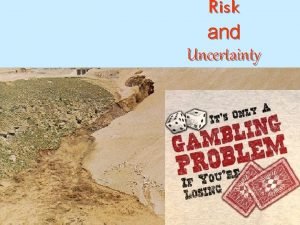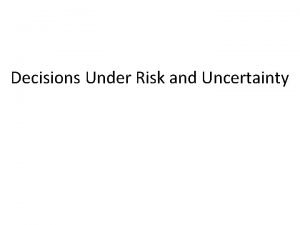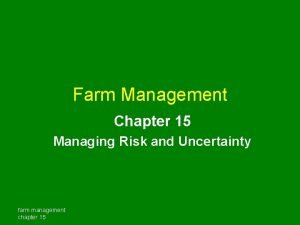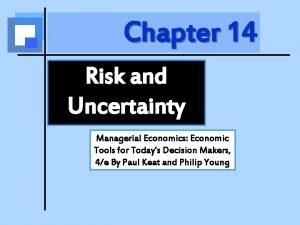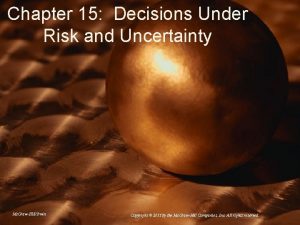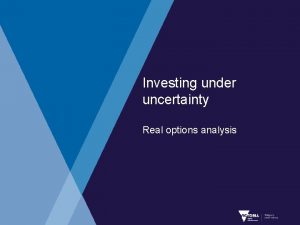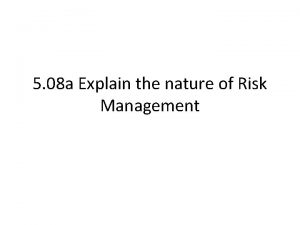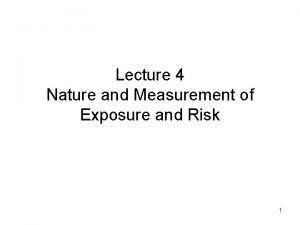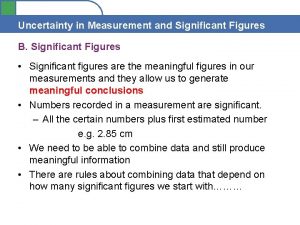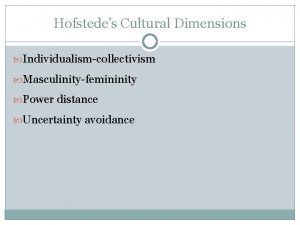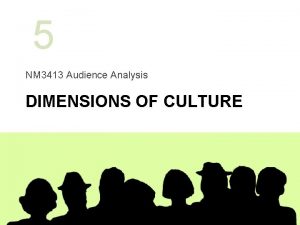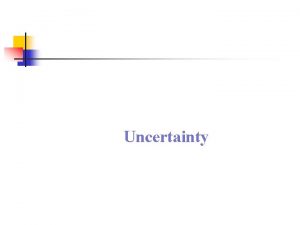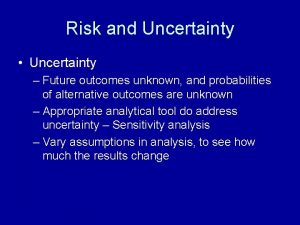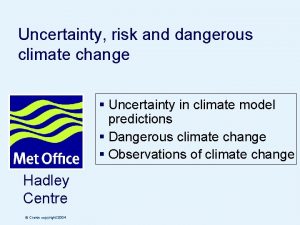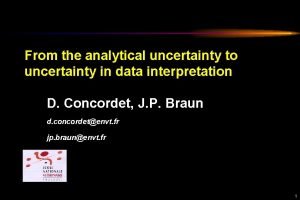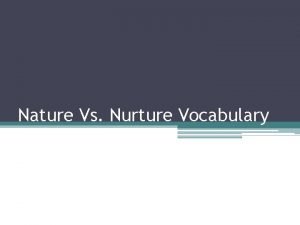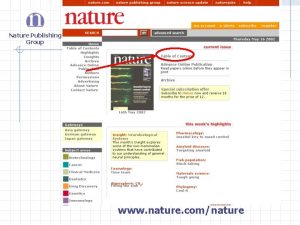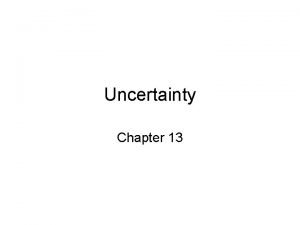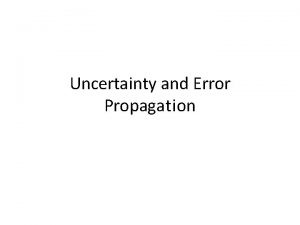RISK DATA Nature of risk and uncertainty v
















- Slides: 16

RISK DATA Nature of risk and uncertainty v Concept of insurance and risk assessment v Measurement of risk v

CONCEPT OF INSURANCE AND RISK ASSESSMENT Techniques for identification of risk: Ascertaining causes and consequences of events but. . . Events Ø are not all equally likely Ø do not hold the same potential cost

MEASUREMENT OF RISK Objective Judge whether the insurance premium is reasonable

QUANTITATIVE METHODS v v v Insurance relies on accurate use of numbers The business world is becoming more and more quantitative Encouragement towards a disciplined pattern of thought

ACCURATE USE OF NUMBERS v Collection of data v Tabulation of data v Description of data v Analysis and interpretation of data v Likelihood estimation v Calculation of premiums v Payments of insurance v Arrangement of reinsurances

BUSINESS WORLD MORE AND MORE QUANTITATIVE Advent of computers v Computer literacy v Need for numeracy v

DISCIPLINED PATTERN OF THOUGHT Study of quantitative concepts v Logical approach to problem v Elimination of invalid arguments v

FEATURES OF RISK DATA v FREQUENCY (Likelihood of risk) v SEVERITY (Cost of risk)

PROFILES v High frequency / low severity E. g Fire losses (High level of predictability) v Low frequency / high severity E. g Losses at sea (High level of uncertainty)

Figure 4. 1 Right-hand end v v v Decide on the strategy for funding the risk Take steps to be protected from the consequences Purchase some kind of insurance

Figure 4. 1 Left-hand end v v Make reasonably accurate estimates of the cost of losses Devise some form of self-funding

DATABASES They help to v v v Make good decisions Make accurate forecasts Improve judgement

INSURANCE DATABASES v v v Fire Theft Accidental damage

DATABASES PROVIDE v Number of variables v Nature of variables (discrete / continuous) v Category of variables (qualitative / quantitative)

USE OF EXISTING DATABASES (Disadvantages) v Collected for some entirely different purpose v Incompleteness of data v Lack of control v Inheritance of faults v Outdated v Limitations and inadequacies unknown

USE OF EXISTING DATABASES (Advantages) v Less time-consuming v Less expensive
 What is risk continuum
What is risk continuum Difference between risk and uncertainty
Difference between risk and uncertainty Capital budgeting under uncertainty
Capital budgeting under uncertainty Risk and uncertainty in farm management
Risk and uncertainty in farm management Risk and uncertainty in managerial economics
Risk and uncertainty in managerial economics Uncertainty vs risk
Uncertainty vs risk Risk versus uncertainty
Risk versus uncertainty Liquidity measures
Liquidity measures Nature and nature's law lay hid in night meaning
Nature and nature's law lay hid in night meaning Determinace lidské psychiky
Determinace lidské psychiky Nature and scope of risk management
Nature and scope of risk management Retrospective risk
Retrospective risk Nature of exposure and risk
Nature of exposure and risk Significant figures cartoon
Significant figures cartoon Is it real issue with genuine controversy and uncertainty
Is it real issue with genuine controversy and uncertainty Low and high uncertainty avoidance
Low and high uncertainty avoidance Laray m. barna (1997)
Laray m. barna (1997)
